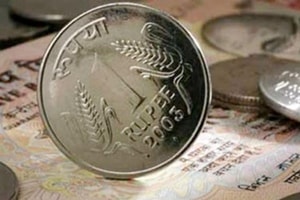Raghuram Rajan took over as the RBI governor on September 4, 2013. Rupee closed at 67.03 on that day. Come August 8, 2016 – the rupee was at 66.84. Some would say Rajan’s term hasn’t brought about any major appreciation in the rupee. But the fact that Rajan, with a series of steps, and the confidence he instilled in the minds of global investors, significantly checked the volatility in Indian rupee, is his biggest achievement.
Sajal Gupta, Head Currencies at Edelweiss Securities is of the opinion that Rajan has significantly helped rupee at a time when it was a depreciating currency. “…but, most importantly he has reined in the volatility quite well. He has ensured that rupee is globally in line with what other currencies behave like. This means there is no undue panic in the markets when it comes to the rupee,” Gupta tells FE Online. “On the forex reserves front as well, he opened up the debt limit for FIIs and this greatly assisted in accumulation of forex reserves. He has also very recently opened up the participation of FIIs in unlisted bonds. All these are things that help attract inflows,” Gupta adds.
Says Shubhada Rao, Chief Economist at Yes Bank, “Rajan has anchored expectations very well. The fact that inflation’s trajectory corrected under Rajan, came down by 300 to 400 bps, and the monetary policy framework that he has decided on – all these factors have made the rupee attractive in the global market.” “He took steps to check currency speculation and brought investor confidence back. This is quite an achievement given the atmosphere of global uncertainty. He was able to tackle any speculation in currency trading,” Rao tells FE Online.
Also read: Raghuram Rajan’s last RBI policy review: 5 achievements of the governor till date
Agrees Dr Arun Singh, Lead Economist at Dun & Bradstreet India, “What stood out in the case of Rajan was that he did not target a level for the rupee, it was never about a ‘strong’ or ‘weak’ rupee, rather the focus was on less volatility – a goal he managed to achieve successfully. Rajan has done very well on the rupee, and forex reserves are also at almost an all-time high.” “If you notice, Rajan’s poliices were pre-emptive in nature. This is the reason that Indian rupee has seen very little impact of an event as major as the Brexit,” Singh says.
Jamal Mecklai, MD & CEO of Mecklai Financial, while crediting Rajan for stabilising the rupee, also begs to differ with his policy. “Rajan has obviously helped stabilise the rupee, there is no doubt about it, he has done a great job on that front. He has put a lot of credibility on the table and there does not appear to be any major threat on that front,” he says, adding that “things like lower commodity prices and the government getting its house a bit in order have also helped.”
However Mecklai says, “For me there is just one point of disagreement. Rajan keeps saying that it is important to keep currency volatility in check to control inflation. I am not sure I agree with this view for the fact that globally if you see many currencies are volatile, but the inflation is also low. Also, if there is less volatility in the currency market, then an importer who has to take 7-8% forward will be disinclined to cover. And this can cause a problem.”
Rajan took over as the RBI governor at a time when India’s inflation was above 10% and the Indian rupee was staring at a crisis. Not only did he hike rates to tame inflationary expectations, Rajan also took a number of steps to stem the rapid depreciation of rupee – opening a swap window for deposits from NRIs, being one of them. Come 2016, rupee is stable, and that feel analysts is something that one should certainly give Rajan credit for.


